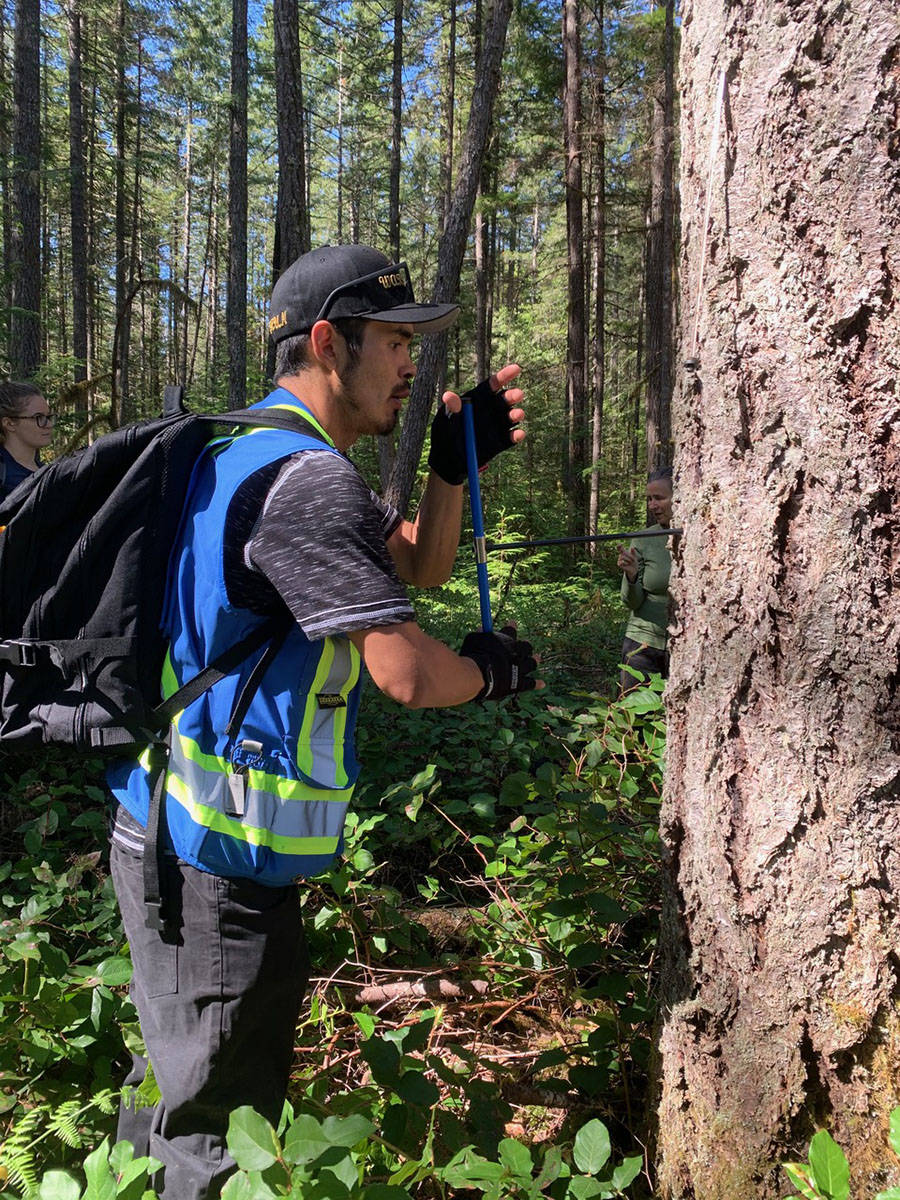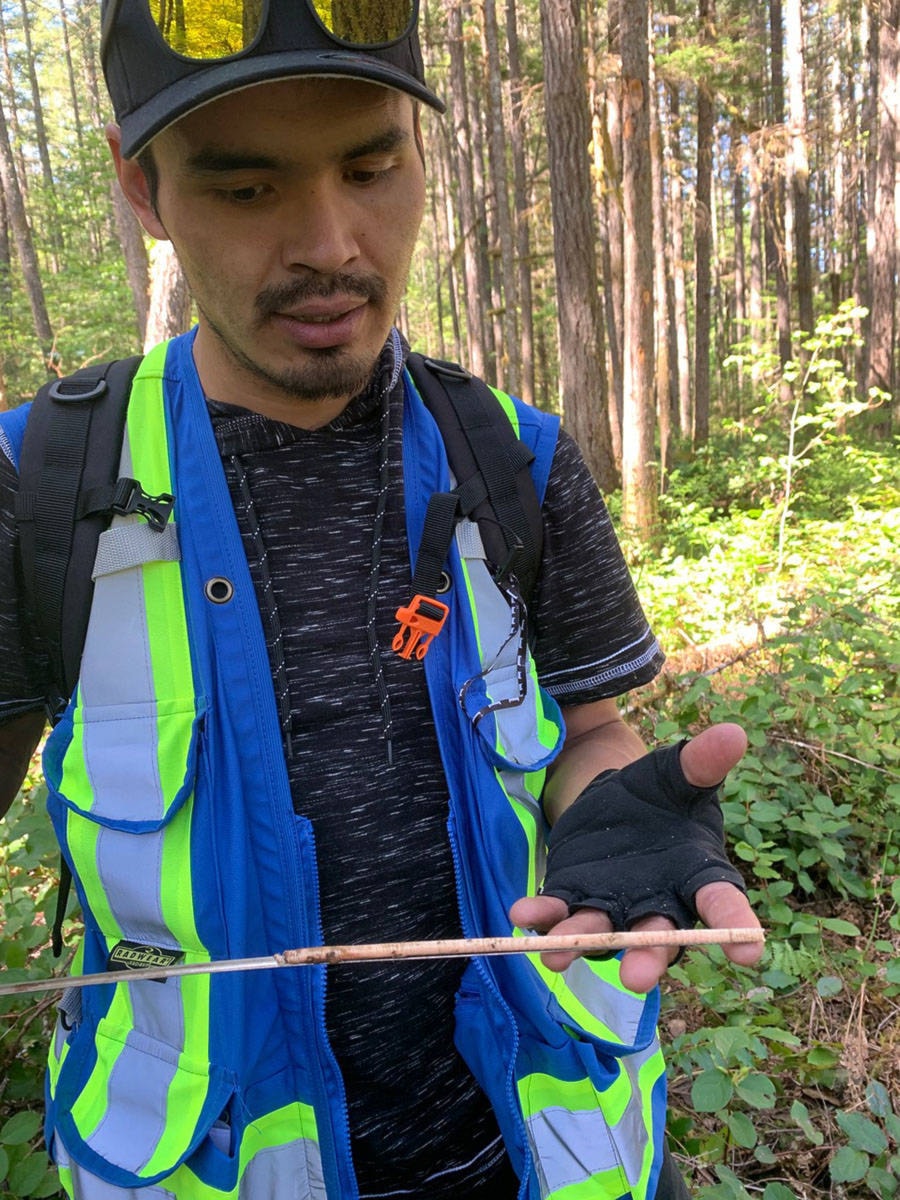By Susan Down
The Cowichan Valley Arts Council is organizing the Watershed Show: Through the Lens of Art, which runs at the Cowichan Community Centre from Aug. 27 to Sept. 25. In the weeks before the show, these columns will highlight people and activities that reflect the goals of the Cowichan Watershed Board. This week — riparian protection.
Although we are loaded with the right gear to measure and record everything along the protected swath of the riverbank, it is our own senses we need to use first, says forester Heather Pritchard. Sit and listen briefly when you arrive at the site, she says. Moments of stillness allow us to hear the “who cooks for you” call of a barred owl and witness the nesting activities in a dead tree.
I am tagging along on orientation day for the two crewmembers, practicing measuring skills along the Cowichan River Trail. It is all in preparation for the research project on the Koksilah and Chemainus Rivers, just as vital to the health of the salmon and the watershed as the Cowichan. The Cowichan Watershed Board, in partnership with Cowichan Tribes and the Halalt First Nation, received $500,000 for a project to improve salmonid habitats in the two rivers as part of B.C.’s Economic Recovery Plan is aimed at restoring ecosystems, wildlife and habitats.
This part of the project is a study of riparian areas. In other words, the shoreline and surrounding area bordering rivers and lakes. They want to answer the question of what’s going on within 100 metres from the shoreline even though 30 metres is the maximum swath protected by legislation. Healthy riparian zones mean more natural water storage, shade for fish and corridors for wildlife. A vibrant riparian zone reduces extremes of flooding, erosion and drought.
At the chosen site on this first day, Pritchard holds the end of a measuring tape like a May pole as crewmember Brad Sylvester walks around her at the other end of the tape. Once the area is marked off, we measure and record what’s in it. Each plot is 5.6 metres or 1/100th of a hectare. Adam Nicholas twists an incremental borer into the largest tree like a corkscrew. Then he inserts the u-shaped rod in the centre to pull out a slim cylinder the size of pencil lead. We can easily see the alternating dark and light stripes, the light indicating spring growth and the dark indicating summer growth. Both together add up to one year in a tree’s life. This one has 58 years’ worth of rings. Then we measure the girth of the tree with a special measuring tape that does the math for us to figure out the diameter.
We learn to give each standing tree a number from one to nine based on appearance. A tree that’s healthy and has all its branches is a one. A dead tree missing most of its bark and branches is a five. Different classes have different values for wildlife habitat, says Pritchard, adding that woody debris on the forest floor has value, too. A decaying log can hold 25 times as much water as the soil.
Measuring trees is just the beginning. We make notes on all the flora in the plot as well, from ferns and salal to wildflowers. While I’m keeping my eyes on the ground as we walk so as not to trip, Nicholas is the one who points out the toad at the side of the trail and the tiny bright green tree frog under a leaf. He has a story to go with every plant we examine based on his grandfather’s teachings.
At the end of the day, we pack up and I head home with a new appreciation of the ambitious project ahead for the crew, as they embark on a baseline study that will unlock the secrets of the riparian zone. Fancy name, but for the rest of us non-scientists, it’s all about understanding the connections between land and waterways.
Susan Down is the managing director of the Cowichan Valley Arts Council.

